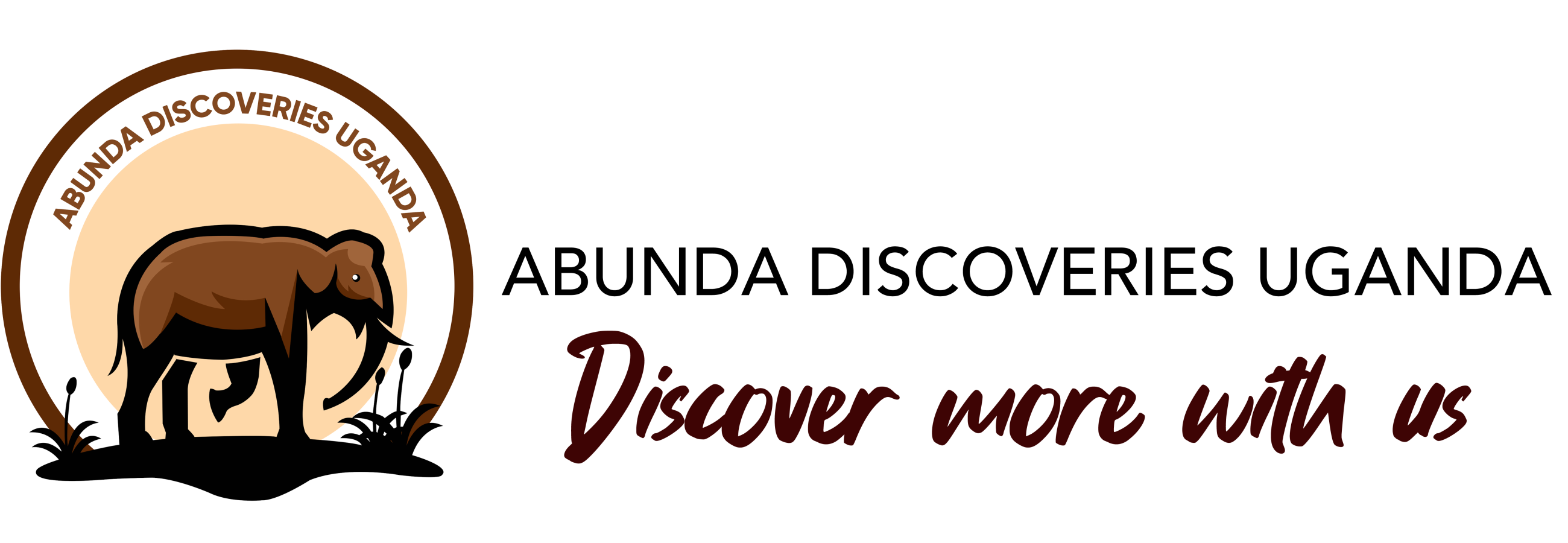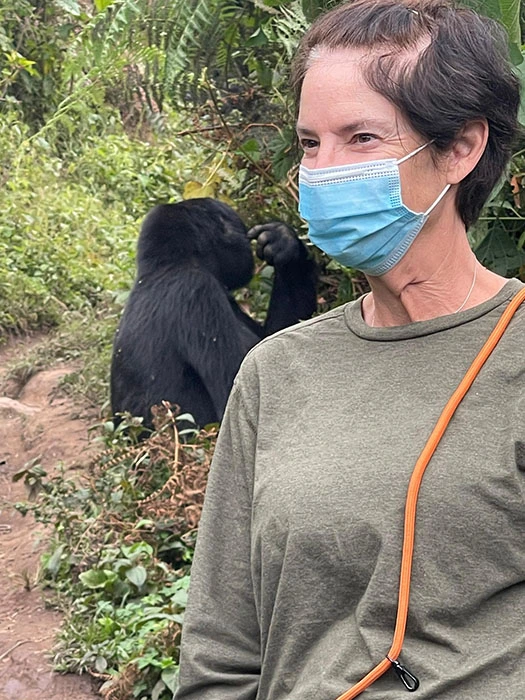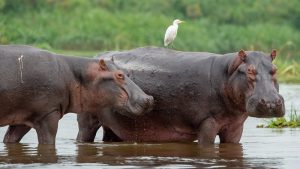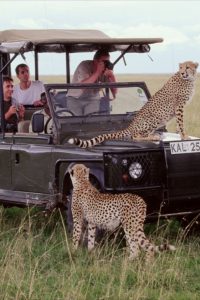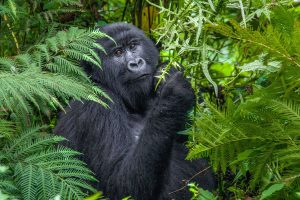The Ultimate Gorilla Trekking Adventure
Savor Abunda Discoveries Uganda’s gorilla trekking safaris in Rwanda, Congo, and Uganda. Our website provides trustworthy information about wildlife safaris and gorilla trekking in Rwanda, Uganda, and the Congo. Find out more about the price of trekking Ugandan gorillas, the families to hike, what to bring, the best time to see the gorillas, the nutrition of mountain gorillas, and how to obtain permits for gorilla trekking—the Ultimate Gorilla Trekking Adventure.
Our gorilla trips can be classified as luxury, mid-range, or budget depending on the type of lodging you want for your gorilla safari. We will provide you with the best quote for the tour package you have selected if you submit an inquiry.
Top Travel Offers to Rwanda
Have wildlife adventures like gorilla trekking in Rwanda been on your bucket list? Look through our packages, select the ideal safari choice, and have it customized to satisfy your wildest fantasies.
Join us in exploring the genocide memorial center. Akagera National Park, Nyungwe National Park, Volcanoes National Park, and other Rwandan landmarks.
Top Congo Travel Offers
The Virunga jungles in the Democratic Republic of the Congo provide a singular experience that allows you to fully appreciate one of Africa’s wonders.
The Nyiragongo active volcano and Congo mountain gorillas can be found in the Virunga National Park. You can see lowland gorillas in the Congo in Kahuzi Biega, unlike in Rwanda and Uganda.
Ugandan gorilla trekking
There are no better experiences in Africa than the “pearl of Africa.” It is an incredible experience to hike through the forest. The thrill of seeing the last few gorillas in the world is incredible, and one’s anticipation grows with every step. It is widely acknowledged that Bwindi Impenetrable National Park is one of Africa’s most interesting places. It became a national park in 1991, and the Mubare group became the first gorillas to live there in 1993.
Seeing the gorillas in their natural environment is an amazing experience for tourists. Thus, take advantage of the chance to go gorilla trekking in Uganda, home to the world’s greatest population of mountain gorillas.
In Uganda, What is Gorilla Trekking?
In Uganda, gorilla trekking entails a protracted trip through dense forests, such as Bwindi Impenetrable National Park, in pursuit of the primates. To locate a family of habituated gorillas, the trip entails becoming a little messy, growing weary, and venturing into the bush through the “impenetrable” jungle with an experienced local guide. Trekking with gorillas is amazing and gives visitors lifelong memories to share.
Where in Uganda are the Mountain Gorillas?
Bwindi Impenetrable National Park in Uganda and the Virunga Mountains in Rwanda and the Democratic Republic of Congo are home to mountain gorillas. About 450 mountain gorillas reside in Bwindi Impenetrable National Park in Uganda. It is home to 50% of the world’s remaining mountain gorilla population. Situated in the southwest of Uganda, Bwindi is one of the most visited national parks in East Africa and is well-known for gorilla trekking. The Ultimate Gorilla Trekking Adventure
Buhoma, Nkuringo, Rushaga, and Ruhija are the four sectors that make up the Bwindi region. In addition to restaurants, craft booths, and guiding services, these areas provide an amazing selection of upscale lodges and campgrounds.
Northern Buhoma Sector.
With four gorilla populations accustomed to humans, this is the most visited area by hikers. Mubare, Habinyanja, Kuringo, and the Rushegura group of gorillas are the groups. Buhoma Community Rest Camp, Sanctuary Govilla Forest Camp, Buhoma Lodge, CTPH Gorilla Conservation Camp, and Silverback Lodge are just a few of the well-developed and cozy lodging options in this area.
The Nkuringo sector.
There are gorilla groups in this area, including the Kirungo group. Which gets its name from a Rukiga word meaning round hill. This area offers inexpensive lodging options, such as Clouds Mountain Gorilla Lodge, Nkuringo Gorilla Camp, Nshongi Camp, and Chameleon Hill Camp.
The East Ruhija Sector.
The Bitukura group, which was named after a river where they were initially sighted, is a group of 12 gorillas, including four silverbacks, that live in the Ruhija sector. Ruhija Gorilla Safari Lodge, Ruhija Gorilla Mist Camp, Trekkers Tavern Mist Camp, and Ruhija Gorilla Resort are among the lodging options in the area.
The South Rushaga Sector.
Visitors can stay at Gorilla Safari Lodge and Chameleon Hill Lodge in Rushaga. Which is home to the Nshongi Gorilla Family, Mishaya Family, Kahungye Family, and Bweza Family Group.
What may occur in Uganda while Gorilla Trekking?
A traditional trekking day starts at a designated meeting spot. Such as the headquarters of Buhoma Park, where guests arrive at any time for a briefing with the Uganda Wildlife Authority about gorillas and a short film. Following that, the visitors are split up into groups of roughly eight people and placed among various gorilla groups. The reason for the group size is that small groups are easier to handle and don’t frighten the gorillas.
Uganda’s Best time for gorilla trekking
Most visitors choose to hike in the arid months of January through February and May through September. Even though there are occasional drops of rain during these months. The terrain is drier and the sky is clearer, making it more comfortable for tourists.
The cost of a permit for Gorilla Trekking
In Uganda, permits for gorilla trekking and habituating cost $800 and $1500, respectively. Through Abunda Discoveries Uganda, you can obtain the permit from the Uganda Wildlife Authority. Rwanda costs $1500, while the Democratic Republic of the Congo costs $400 because of the country’s documented political unrest.
Gorilla trekking requirements in Uganda
There are typically two dry and wet seasons in Uganda. However, because Bwindi National Park is a tropical rainforest, it remains rather damp even during the dry season.
Binoculars, gardening tools, insect repellent with DEET, lightweight, waterproof safari clothing, at least two long-sleeved shirts, and a sizable backpack to store all of your possessions are recommended for travelers. It is also advised to bring a camera so that you can take photos and save the wonderful memories of your amazing journey through Uganda.
The local operators at each of your campsites and lodges give you walking sticks so that you can easily enter the “impenetrable” national park.
